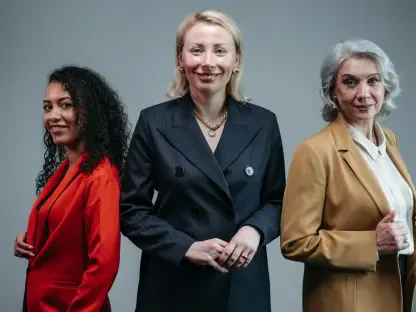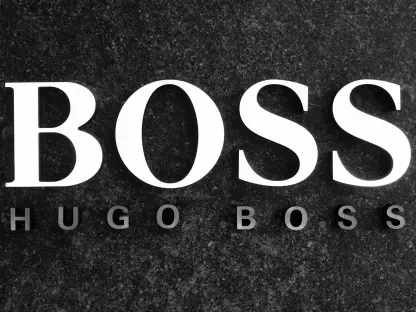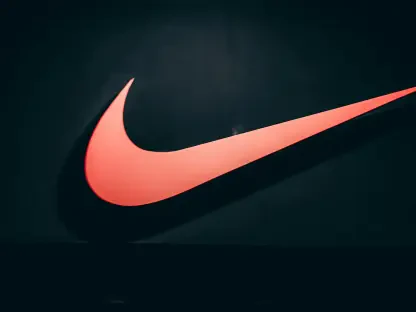As the workplace evolves at a rapid pace in 2025, a wave of new terminology and cultural shifts is redefining how professionals engage with their careers, from grueling schedules to subtle acts of defiance against rigid policies, reflecting a dynamic tension between tradition and innovation. The modern office, whether physical or virtual, is becoming a battleground of competing ideals—where traditional notions of productivity clash with a rising demand for balance and personal well-being. Social media amplifies these changes, turning individual frustrations into collective movements, while technology introduces both innovation and challenges. This exploration delves into the buzzwords and behaviors shaping professional environments, offering insight into what they signal for employees and employers navigating this dynamic landscape.
The tension between old-school work ethics and modern expectations is palpable. On one side, extreme dedication still holds sway in certain circles, while on the other, a growing number of workers are pushing back against unsustainable demands. Generational differences, particularly among younger cohorts, are driving a redefinition of ambition and success. Meanwhile, the lingering effects of the post-COVID era continue to reshape office interactions, revealing both resistance and adaptation. Understanding these shifts is not just about keeping up with jargon—it’s about grasping the deeper undercurrents transforming how work is perceived and performed.
Emerging Work Cultures and Attitudes
Resistance to Overwork
The push against relentless hustle is gaining momentum, reflected in terms like “quiet quitting,” where employees limit their efforts to the bare minimum, refusing to go above and beyond without justification. This concept, which gained traction through social media in recent years, ties closely to the aftermath of widespread job shifts during periods of high mobility like the Great Resignation. It signals a broader disillusionment with workplace cultures that prioritize output over well-being. Workers are increasingly vocal about setting boundaries, challenging the expectation that dedication means endless hours or uncompensated effort. This shift isn’t just a fleeting trend but a fundamental rethinking of what commitment to a job should entail, driven by a desire for sustainable engagement rather than burnout.
Another facet of this resistance appears in the idea of “acting your wage,” which emphasizes doing only what’s commensurate with one’s pay, rejecting the pressure to overextend without fair reward. Alongside this, “lazy girl jobs” have emerged as a popular concept on digital platforms, advocating for roles that offer comfort and minimal stress over intense demands. This mindset prioritizes personal peace over corporate climb, reflecting a cultural pivot toward valuing life outside the office. As more employees embrace these attitudes, companies face the challenge of adapting to a workforce less willing to sacrifice health for productivity, potentially reshaping compensation and job design to align with these evolving expectations.
Redefining Success
A notable trend among younger generations, particularly Gen Z, is captured by “conscious unbossing,” where individuals opt out of management roles to focus on personal goals and mental health rather than hierarchical advancement. This deliberate choice challenges long-standing assumptions that career progression must involve climbing the corporate ladder, instead favoring roles that align with individual values. It’s a response to the burnout often associated with leadership positions and a recognition that success can be measured in terms of fulfillment rather than titles. As this perspective gains traction, organizations may need to rethink how they structure career paths to accommodate those prioritizing balance over traditional markers of achievement.
Parallel to this shift is the concept of “girl mossing,” which stands in stark contrast to the earlier “girlboss” narrative that urged women to define themselves through relentless ambition and work. This newer term encourages a slower, less work-centric identity, allowing space for personal growth outside professional demands. It reflects a broader cultural move away from equating worth with productivity, particularly among women who are redefining what a successful life looks like. The growing acceptance of such ideas suggests a future where workplaces might emphasize flexibility and support for diverse life goals, rather than a one-size-fits-all approach to career advancement that often overlooks individual needs.
Post-COVID Workplace Dynamics
Office Return Challenges
As hybrid and return-to-office policies continue to evolve, the term “coffee badging” has surfaced to describe a subtle form of resistance among employees. This behavior involves workers briefly showing up at the office—often just long enough to grab a coffee or make an appearance—before heading out, sidestepping strict mandates to be physically present. It highlights a lingering tension between employer expectations and employee desires for flexibility, a direct consequence of the autonomy many experienced during remote work phases. Such actions aren’t just about defiance; they signal a deeper demand for trust and adaptability in how work environments are structured, pushing companies to reconsider rigid policies that fail to account for individual circumstances.
Equally telling is the social friction captured by “desk bombing,” where overly enthusiastic colleagues linger at others’ workstations, disrupting focus in an eagerness to reconnect after prolonged remote periods. This behavior underscores the challenges of readjusting to shared spaces, where personal boundaries can be harder to maintain. As offices repopulate, these interactions reveal a need for clearer norms around in-person engagement to prevent workflow interruptions. The phenomenon also points to a broader struggle in balancing the social benefits of office life with the productivity demands of modern roles, suggesting that successful hybrid models must address both logistical and interpersonal dynamics to thrive.
Employee Frustration and Mobility
Workplace dissatisfaction is finding new outlets, as seen in “rage applying,” where frustrated employees impulsively seek new opportunities due to toxic cultures or unmet needs. Recent surveys indicate significant spikes in job applications driven by poor environments, painting a picture of a workforce unwilling to tolerate subpar conditions. This behavior is more than a knee-jerk reaction; it reflects a growing intolerance for workplaces that fail to prioritize employee well-being, pushing individuals to take control of their career paths. As this trend persists, organizations risk losing talent if they don’t address underlying issues like poor management or lack of support, highlighting the urgency of fostering healthier work cultures.
Taking frustration public, the rise of “QuitTok” showcases employees documenting their resignations on social media, turning personal exits into visible statements of discontent. This digital catharsis, building on the legacy of high job mobility seen in past mass resignation waves, amplifies individual grievances into collective narratives that resonate widely. It’s a powerful reminder of how technology can transform private struggles into public discourse, influencing perceptions of workplace norms. For employers, this trend serves as a wake-up call to listen to employee concerns before they escalate into viral departures, while also illustrating the increasing role of online platforms in shaping professional attitudes and actions.
Productivity Extremes and Innovation
Extreme Work Ethics
At the opposite end of the spectrum from resistance trends lies a persistent fascination with extreme productivity, epitomized by the “9-9-6” schedule—a grueling 72-hour workweek from 9 a.m. to 9 p.m., six days a week, with roots in certain high-pressure industries. Despite health concerns and regulatory pushback in some regions, this model continues to captivate segments of the professional world, often celebrated on networking platforms as a badge of dedication. It represents a mindset that equates long hours with success, starkly contrasting with calls for balance, and raises critical questions about sustainability and the long-term impact on worker health. As this concept lingers, it underscores a divide in workplace values that companies must navigate to align expectations with reality.
Similarly, the term “grindcore” describes a lifestyle of intense work combined with personal discipline, often admired in niche online communities that valorize such rigor. Unlike other trends pushing for moderation, this approach embraces asceticism and relentless effort as a path to achievement, revealing a segment of the workforce still tied to traditional ideals of sacrifice for success. This persistence of extreme work ethics amid growing resistance creates a polarized environment where differing philosophies coexist uneasily. For businesses, understanding this spectrum is key to managing diverse employee motivations, ensuring that policies neither alienate those driven by intense ambition nor overwhelm those seeking healthier limits.
Tech and Learning Shifts
Technology’s dual role in the workplace is evident in trends like “loud learning,” which encourages professionals to openly discuss skill development, fostering mentorship and inspiring colleagues through shared growth. This approach leverages digital tools and collaborative platforms to make learning a communal experience, breaking down silos that often hinder knowledge exchange. By prioritizing transparency in professional development, it creates opportunities for stronger team dynamics and innovation, positioning skill-building as a collective asset rather than an individual pursuit. As workplaces become more interconnected, such practices could redefine how talent is nurtured, with an emphasis on mutual support over isolated achievement.
On the flip side, the rise of “workslop”—low-quality, AI-generated content flooding professional settings—signals a downside to rapid tech adoption, where efficiency often trumps clarity or value. This trend critiques the overreliance on automated tools that produce subpar outputs, diminishing trust in digital solutions and frustrating those who value precision. It serves as a cautionary note about balancing technological convenience with quality, urging a critical eye on how such tools are integrated into workflows. Addressing this challenge requires a commitment to standards that prioritize meaningful content over sheer volume, ensuring that innovation enhances rather than undermines professional integrity in an increasingly digital landscape.
Shaping Tomorrow’s Workplace
Reflecting on the myriad trends that defined the 2025 workplace, it became evident that a profound transformation had unfolded, balancing extreme productivity with a fierce demand for personal well-being. The clash between grueling schedules and subtle rebellions like minimal office presence had painted a complex picture of professional life, where individual choice began to rival traditional expectations. Social media had played a pivotal role, amplifying personal narratives into broader movements, while technology had offered both empowerment and pitfalls that shaped daily interactions.
Looking ahead, the focus must shift to actionable strategies that bridge these divides, starting with fostering environments where flexibility and well-being are not just buzzwords but core principles. Companies should consider hybrid models that respect diverse needs, while investing in training to curb the misuse of tech tools, ensuring quality remains paramount. Encouraging open dialogue about career goals can help align personal aspirations with organizational objectives, reducing friction. Ultimately, the lessons learned must guide the creation of workplaces that honor both ambition and balance, setting a sustainable path for the years to come.









